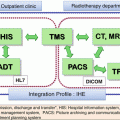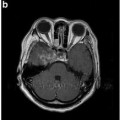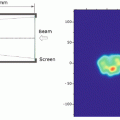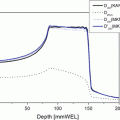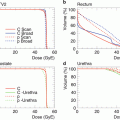Fig. 10.1
Difference of reference condition for the monitor calibration between passive and scanning delivery

Fig. 10.2
Example of the daily QA for the NIRS scanning system
The beam delivery system and its treatment planning system (TPS) require dosimetric patient-specific QA to check each individual plan and its delivery. The patient-specific QA is usually performed before therapeutic irradiation as the following steps. Schematic of patient-specific QA workflow is shown in Fig. 10.3. After the treatment planning, the dose distribution is measured using ionization chambers set in a water phantom. In the measurement, the irradiation sequence is performed using the same control-point sequence as for the patient treatment. The measured dose profiles are then compared with the dose distribution recalculated by the TPS using a homogeneous medium instead of the patient CT data. In this way, the quality of the field is checked. Such dosimetric verification is important especially for the scanning delivery, considering the fact that the dose conformation is performed by magnetically scanning the raw beam from the accelerator. Furthermore, each treatment plan is individual. Thus, the delivered field should be checked on the basis of the measured dose profiles. On the other hand, in the passive delivery, it is necessary to calibrate dose per monitor unit (Gy/MU) for each irradiation field. Further, the checks of patient-specific devices such as aperture and compensator/bolus are also required in the passive delivery. This check can be performed by measuring each device and comparing with the design.
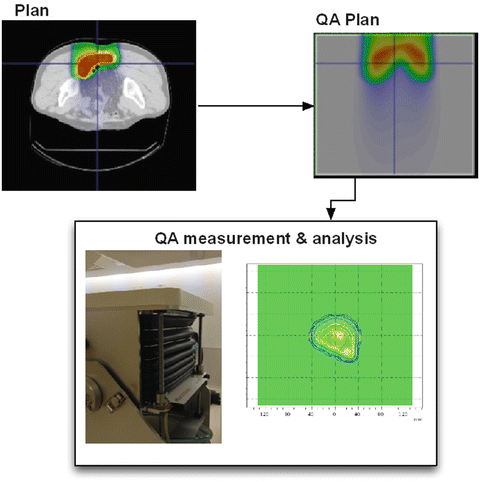

Fig. 10.3
Schematic of patient-specific QA workflow
The following describes the patient-specific QA program for the NIRS scanning delivery. In the patient-specific QA, a commercial 2D ionization chamber array (OCTAVIUS Detector 729 XDR, PTW Freiburg, Germany) is employed for the dose distribution measurement cooperating with an accordion-type water phantom. The water-equivalent depth can be changed from 30 to 300 mm. Owing to sealed water tank, this phantom can be used as both horizontal and vertical beams by rotating water tank. Before the QA measurement, the predose of around 5 Gy are applied for warm-up of the detector. In the measurement, the irradiation sequence is performed using the same control-point sequence as for the patient treatment. The measurements of each beam are performed for three different depths, which are predetermined in the treatment planning. The measured dose distributions are then compared with the dose distribution recalculated by the TPS using a homogeneous medium instead of the patient CT data. For the comparison, the gamma index analysis is performed by using the commercial software, Verisoft (PTW Freiburg, Germany). A typical result of comparison between the measured distribution and the recalculated one is shown in Fig. 10.4




Stay updated, free articles. Join our Telegram channel

Full access? Get Clinical Tree


